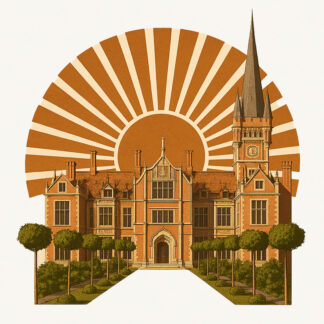The Secret of Radionics
Radionics is a subtle method, often associated with alternative medicine and holistic practices, which is claimed to work through energy fields to harmonize the human body, mind, and spirit. Despite its name, radionics has nothing to do with radio or electronics—it is a science of energy and information interaction based on biopatterns that can be programmed for healing or other purposes. Although radionics has existed for over a century, it remains controversial: science views its foundation skeptically, and public figures and scientists researching this field often face persecution, both in the past and present. In this article, we will discuss what radionics is, how it works, why it stirs such passions, and how modern technologies, such as digitized biopattern databases, contribute to its development.
Origin and Development of Radionics
The roots of radionics date back to the late 19th and early 20th centuries, when science began exploring the interaction of energy and information. Its pioneer is considered to be the American physician Albert Abrams, who in the early 20th century developed a method based on the idea that each organism has a unique energetic vibration, and diseases arise from imbalances in these vibrations. Abrams claimed that these vibrations could be “detected” and “rewritten” using special devices he called “radionics machines.” His works, such as Electronic Reactions of Abrams (1922), laid the foundation for the development of radionics, although they faced fierce criticism from the medical community.
Between the wars, radionics was further developed by researchers like Ruth Drown, who in the 1930s created devices that, she claimed, could diagnose and treat remotely using samples of a patient’s blood or hair. Later, in the mid-20th century, George de la Warr and other British radionics practitioners expanded the method, incorporating spiritual and energetic aspects such as chakra balancing. In modern radionics, biopatterns are used—energetic codes believed to carry information that harmonizes human energy fields.
How Does Radionics Work?
Radionics is based on the premise that everything in the world—humans, plants, even thoughts—has a unique energetic vibration. These vibrations can be “read” and “rewritten” through radionics instruments, which act as intermediaries between the operator’s intention and the patient’s energy field. Unlike traditional medicine, radionics does not work through physical drugs or procedures—it operates on a subtle, informational level.
For example, a radionics practitioner might use a device with scales and knobs to set specific “frequencies” corresponding to particular states, such as emotional calm or physical balance. The operator often uses a patient’s “witness”—this could be a strand of hair, a photograph, or even a name—as a connection to their energy field. Then, using intention and the device, the practitioner “sends” information that is claimed to harmonize the patient’s energy, even if they are on the other side of the world.
Radionics is not related to radio or electronics, although its name might suggest otherwise. This method does not work through electrical currents or technical signals—radionics devices serve as tools for transferring information, based on subtle quantum physics principles such as non-local information transfer. According to this idea, information can be transmitted not physically but through invisible energy fields that connect everything in the universe. This concept was developed in the 20th century by physicist David Bohm, who in his holographic universe theory (Wholeness and the Implicate Order, 1980) argued that there exists an “implicate order”—a deep, holistic level where all information is interconnected and can be accessed regardless of distance. This aligns with the radionics idea that energy fields can be “read” and “rewritten” remotely using intention and a device.
Moreover, quantum physics research, such as John Bell’s 1964 theorem on quantum entanglement, theoretically confirms that particles can interact instantaneously, regardless of distance, which could explain the basis of radionics. However, science has not yet confirmed these principles through experiments—there is a lack of reproducible studies and empirical evidence to prove that such subtle energy fields exist and function as radionics practitioners claim. Yet, the fact that science does not yet have answers does not mean these phenomena do not exist—just as gravity operated even before Isaac Newton described it by observing a falling apple in the 17th century. Radionics devices, operating symbolically, often reflect the operator’s intention rather than physical processes, and this remains one of the greatest mysteries of this method, which science is only beginning to explore.
Scientific Perspective and Skepticism
The scientific community views radionics with great caution, often considering it pseudoscience. Prominent skeptic James Randi openly criticized radionics methods in the 1970s, claiming that their devices are just “empty boxes” with no real power, and any observed effects are merely the placebo effect. Scientific studies also find no basis for the effectiveness of radionics: for example, a 2008 article published in the Journal of Alternative and Complementary Medicine showed no statistically significant evidence confirming the benefits of radionics. Nevertheless, radionics proponents counter that science lacks the tools to capture the subtle energies they work with. They emphasize that many natural phenomena were long misunderstood—for instance, electromagnetic waves existed even before Heinrich Hertz experimentally confirmed them in the late 19th century, paving the way for radio technology. This shows that current scientific limitations do not preclude the possibility that radionics principles may be valid.
Persecution of Radionics: Past and Present
Radionics has faced persecution since its inception. In the early 20th century, Albert Abrams was accused of charlatanism, and his devices were confiscated by U.S. authorities. In the 1930s, Ruth Drown faced legal actions, and her clinic was shut down, despite numerous patient testimonials about improvement. The U.S. Food and Drug Administration (FDA) actively campaigned against radionics practices in the mid-20th century, claiming they posed a public health risk by diverting people from traditional medicine.
This persecution continues today. Modern scientists and public figures researching radionics often face criticism and marginalization. For example, social platforms like Meta or Google restrict content related to radionics if it is deemed “misleading” or “unverified.” Some radionics practitioners claim that the pharmaceutical industry, seeking to protect its interests, lobbies against alternative methods, including radionics, as they offer cheaper and more accessible treatment alternatives. Despite this, the radionics community remains resilient, relying on personal experiences and arguing that science has not yet caught up with these subtle phenomena.
Radionics and Modern Instruments
Although radionics has nothing to do with radio or electronics, modern instruments and technologies have helped it evolve. Today, radionics devices often feature digital interfaces, allowing operators to more easily set “frequencies” and work with biopatterns. Additionally, digitized biopattern databases are being created, storing thousands of energetic codes corresponding to various states—from emotional calm to spiritual awareness. These databases enable practitioners to quickly select the necessary biopatterns and “rewrite” them into essences or directly transmit them to the patient remotely.
Modern radionics methods are based on quantum physics principles, such as non-local information. For example, John Bell’s 1964 theorem on quantum entanglement shows that particles can interact over distances, which could theoretically explain how radionics works. However, these ideas remain speculative, and science has not yet confirmed them in practice.
Conclusions
Radionics is an intriguing method that combines ideas of energy, information, and holistic healing. Although it has nothing to do with radio or electronics, modern technologies, such as digitized biopattern databases, allow it to adapt to the contemporary world. Nevertheless, radionics remains controversial: science views its foundation skeptically, and researchers and practitioners face persecution both in the past and present. Despite this, radionics reminds us that much remains unknown about the subtle energies that may shape our lives. Perhaps in the future, science will find ways to explain these phenomena, and radionics will become a bridge between traditional and alternative healing systems.
Sources and Recommended Literature
- Abrams, A. (1916). New Concepts in Diagnosis and Treatment. Physico-Clinical Co. – Abrams’ works on the fundamentals of radionics and his developed method.
- Bell, J. S. (1964). “On the Einstein Podolsky Rosen Paradox”. Physics, 1(3). – Quantum entanglement theorem, theoretically related to radionics principles.
- Randi, J. (1982). Flim-Flam! Psychics, ESP, Unicorns, and Other Delusions. Prometheus Books. – A skeptic’s critique of radionics methods.
- Journal of Alternative and Complimentary Medicine (2008). “A Systematic Review of Radionics”. – A scientific article on studies of radionics effectiveness.
- Hertz, H. (1887). “Über sehr schnelle elektrische Schwingungen”. Annalen der Physik, 267(7). – The discovery of electromagnetic waves, as an example that science does not immediately explain natural phenomena.
- Young, T. (1804). “Experiments and Calculations Relative to Physical Optics”. Philosophical Transactions of the Royal Society of London. – A historical source on the wave nature of light, illustrating the evolution of science.
- Gerber, R. (1988). Vibrational Medicine: New Choices for Healing Ourselves. Bear & Company. – On energetic healing methods, including the context of radionics.
- Drown, R. (1938). The Theory and Technique of the Drown Radio Therapy – Ruth Drown’s works on radionics devices and their application.
- Lakhovsky, G. (1939). The Secret of Life: Cosmic Rays and Radiations of Living Beings – Georges Lakhovsky’s research on vibrations and their effects on living organisms, closely related to radionics ideas.
- Tiller, W. A. (1997). Science and Human Transformation: Subtle Energies, Intentionality and Consciousness – William Tiller’s works on subtle energies and the impact of intention, related to radionics principles.
- Oschman, J. L. (2000). Energy Medicine: The Scientific Basis – James Oschman’s book on energy medicine and its scientific basis, including the context of radionics.
- McTaggart, L. (2002). The Field: The Quest for the Secret Force of the Universe – Lynne McTaggart’s research on the quantum field and its connections to alternative healing methods.



